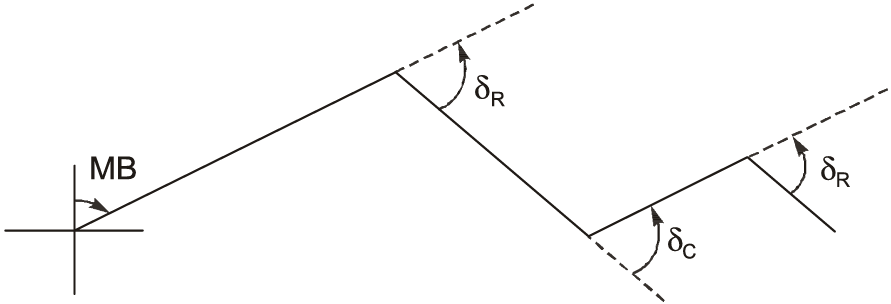Traversing in surveying is a method of establishing a control network by measuring the angles and distances between a series of points.
There are two types of traverse: Open Traverse and Closed Traverse.
There are two main methods of theodolite traversing:
- Included angle method:

This method is most commonly used for closed traverses. In this method, the horizontal angles between all adjacent traverse lines are measured. The lengths of the traverse lines are then measured using a chain or tape. The coordinates of each station in the traverse can then be calculated using the compass rule or the traverse closure method.
- Deflection angle method:
This method is most commonly used for open traverses. In this method, the deflection angle at each station is measured. The deflection angle is the angle between the backsight and foresight directions. The lengths of the traverse lines are also measured using a chain or tape. The coordinates of each station in the traverse can then be calculated using the traverse closure method.

In addition to these two main methods, there are also a number of other methods of theodolite traversing, such as the fast needle method and the loose needle method. However, these methods are less commonly used and are not as accurate as the included angle and deflection angle methods.

Which method should I use?
The best method of theodolite traversing to use will depend on the specific requirements of the survey. For example, if the survey is a closed traverse and high accuracy is required, then the included angle method should be used. If the survey is an open traverse and speed is more important than accuracy, then the deflection angle method can be used.
